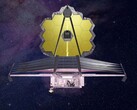A lot of research has gone into understanding planets, stars, and cosmic dynamics. There is an already established understanding of what celestial objects should be composed of and the speed at which they should be travelling. But the newly discovered CWISE J1249 defies everything that is known.
CWISE J1249 was detected using NASA’s Wide-field Infrared Survey Explorer (WISE). Spectroscopic analysis of this object showed that it had an extremely low mass, minimal metal content, and a unique infrared signature.
Its extremely low mass is far below what you would expect from a star. Its minimal metal content suggests that it is unlikely that CWISE J1249 is a planet. Its infrared signature is also different from what stars, planets, and substellar objects usually produce. NASA’s WISE, however, detected internal heat from CWISE J1249. This suggests that the object is not a random fragment flying through space but a structured body.
Another challenging feature of CWISE J1249 is the speed at which it travels — over one million miles per hour. This is an unconventional speed for a star or a planet.
Scientists have two possible classifications for CWISE J1249. The first one suggests that it is a fragment of a white dwarf supernova that was ejected at extreme velocity during the explosive death of its parent star. The second one suggests that it is a failed star or an ejected planet that never really gained sufficient mass before it got expelled. Both theories, however, do not fully account for all CWISE J1249’s characteristics. The object’s origin remains a mystery.
















